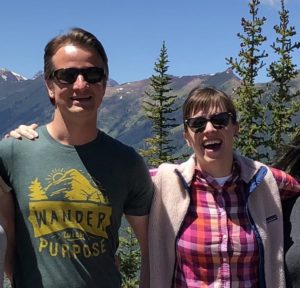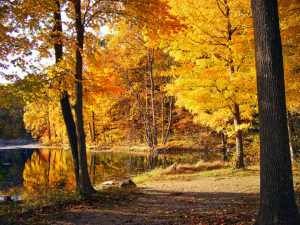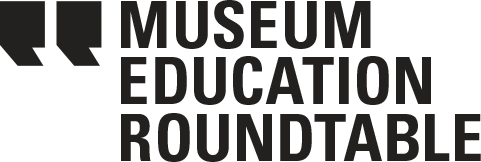4 x 4: Self-Care and Nature with Mike Murawski
In a new format aimed at incorporating multiple perspectives on current topics in our field, MER introduces “4 x 4” interview, in which we invite four thought leaders to answer four questions related to a chosen theme. This playful approach seeks to navigate pressing topics with the personal touch of a conversation. Our first theme features four approaches to “self-care.”
Aligning with the transition into the autumn season, Mike Murawski, Director of Education & Public Programs for the Portland Art Museum, and Michelle Dezember, Chief Program Officer of the Aspen Art Museum and MER board member, talked about their experiences in nature, its restorative benefits, and what we can learn from reconnecting with the natural world.
Michelle Dezember: Which came first, your love of museums or your love of nature? How do you see these as related?
Mike Murawski:
I grew up in St. Louis with my back yard right up next to Laumeier Sculpture Park, so my play in nature as a child also involved sculptures and art. I don’t remember visiting a museum until eighth grade, and so my first real experience with art was outdoors in more uncontrolled, wild spaces where I could run around, unsupervised and certainly not quiet. Maybe as a result, my work within museums has not always accepted the structures of organizational culture that restrict our experiences with art and make them feel like they have to be quiet, untouchable, or clean instead of messy. I do think that something happened for me at the sculpture park as a child that ties together my love of nature and my love of art. It all goes back to me loving being out in open play.
Michelle: A “wild space” is in direct contrast with the “white cube,” isn’t it? Even though you and I might not change museums architecturally, we can certainly engender a wild space through our teaching and programming. I think that happens when we immerse ourselves into that space with deep curiosity. This makes me think about the idea of “forest bathing,” which you introduced me to. Can you talk about what this is and what impact it has on your life and work?
Mike:

Across the long history of the human species, we’ve only been sitting at a desk, in front of a screen, walking on pavement, hearing industrial sounds of machines, or even wearing shoes for a tiny fraction of that time. When was the last time you were somewhere that you couldn’t hear the sounds of the human-made world? I honestly can’t remember, because even when you’re in the middle of a national park you might still hear an airplane fly overhead. We just simply don’t connect with nature in slow and intimate ways any more, but a desire for that connection is ingrained in our DNA. Forest bathing allows us to have experience where we take in nature through our sense, not on a hike or anything, but through a slow, immersive, meditative experiences. There’s a lot of interesting research that has been done in the last several years about the positive impact of being in nature on our health and physical well-being. Forest bathing actually even taps into our spiritual well-being and how we identify our whole self by seeing nature as a core part or our being and origin.
This summer I led a brief forest bathing experience at MuseumCamp at the Santa Cruz Museum of Art & History. We gathered in a nearby park and shared a series of meditative, yoga-like experiences that allowed us to be present in the moment and connect with the forest through all of our senses. Going on a hike is about ‘getting there’ but forest bathing is about ‘being here’ and taking in the moment, in the place we are in. It can happen in backyards, parks, gardens, anywhere there is some greenery. At the Sustain retreat you hosted at the Aspen Art Museum, we took our shoes off during one of the sessions, and then we did a walking meditation as part of another experience. We should all do that more often, because there’s something in our DNA that responds positively to opening ourselves up to that kind of connection with nature and the world around us.
Back to your question about what we can learn from this connection to nature that could be applied to our work—I think it all starts with slowing down. Through much of the equity, inclusion, and accessibility work we’re doing at the Portland Art Museum, we frequently talk about how much we could achieve if we slow down and trust the process. What’s the worst that can happen if we don’t prioritize the same pace of deadlines and work flow, and we take the time to be in the moment and have the difficult and important conversations we need to be having (but often take time)?
The other thing that has been important to me is tactile, physical engagement with things. How many times have you gone on a hike and maybe not touched anything? We have an idea that getting dirty is bad, but in Santa Cruz I asked people to take their shoes off in the dirt (totally inspired by our walking meditation in Aspen). I invited people to rub the dirt in their hands, smell it, and let your body reconnect with what surrounds us. So often the white cube doesn’t invite that tactile engagement, but as educators we can open up a whole new range of experiences. We’re inviting a much closer relationship with objects and people when we engage in all of our senses, not just sight.
Michelle: You touched on the spirituality of experiences with nature. It seems that feeling humbled or part of something bigger might happen most easily in immersive experiences that disconnect us from our routine. What can people who don’t have easy access to expansive public lands do?
Mike:
Living in the Pacific Northwest, I definitely have the privilege of living close to incredible old growth forests, and it’s part of the culture and identity of this place. It’s certainly not like that everywhere. Yet everyone has some sort of green space nearby. Botanical gardens or nearby parks are amazing places to visit and unplug. Go back to a place to watch how it changes through the seasons. One of the exercises in forest bathing is to think of a memory of a tree from your childhood, maybe one you would climb or build forts around. It shows us that all we need is one tree to form a connection. Visit a tree and make a leaf collection, draw some of the leaves, wonder how long that tree has been there, and think about the story it has to tell. Or, can you take your meetings outdoors for a walk around the block? All of these gestures ground us in the moment and provide us with the sense of connection needed to be present.
Michelle: Which is so important! Right now is autumn, which I love for the reminder to embrace change. What symbolism does autumn have for you?
Mike:

Autumn has traditionally been the time of things dying, fading, or leaves falling off the trees. But in Portland, the summer is so dry that everything turns brown. When it starts raining in the fall, life comes back with green moss and mushrooms. Re-growth is the best way to describe it. It’s very restorative and powerful.
We had a bad wildfire last year outside of Portland that burned 50,000 acres, including many popular hiking trails. Just a couple of weeks ago, my partner and I took our first hike through the area since it has started to re-open. To walk through the forest and see the scarring of burn marks on the trees and then bright green ferns and moss growing all around them – that reminded me that nature can come back after terrible devastation with new life. There’s a resilience that nature can teach us if we are paying attention. There is a gift that comes from dramatic change. Things will grow back, and often even stronger.
Mike Murawski is the Director of Education & Public Programs for the Portland Art Museum and founding author and editor of ArtMuseumTeaching.com. He earned is MA and PhD in Education from American University, focusing his research on educational theory and interdisciplinary learning in the arts. He has also served in education departments at the Saint Louis Art Museum, the Mildred Lane Kemper Art Museum, and led workshops, lectures, and trainings at museums across the country. He is passionate about how we can come to see museums as agents of change in their communities as well as creative sites for transformative learning and social action.
Michelle Dezember is the Chief Program Officer of the Aspen Art Museum and serves on the Board of Directors for the Museum Education Roundtable.

